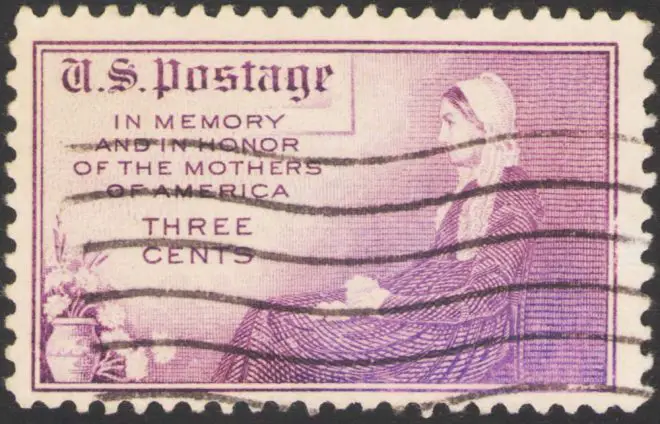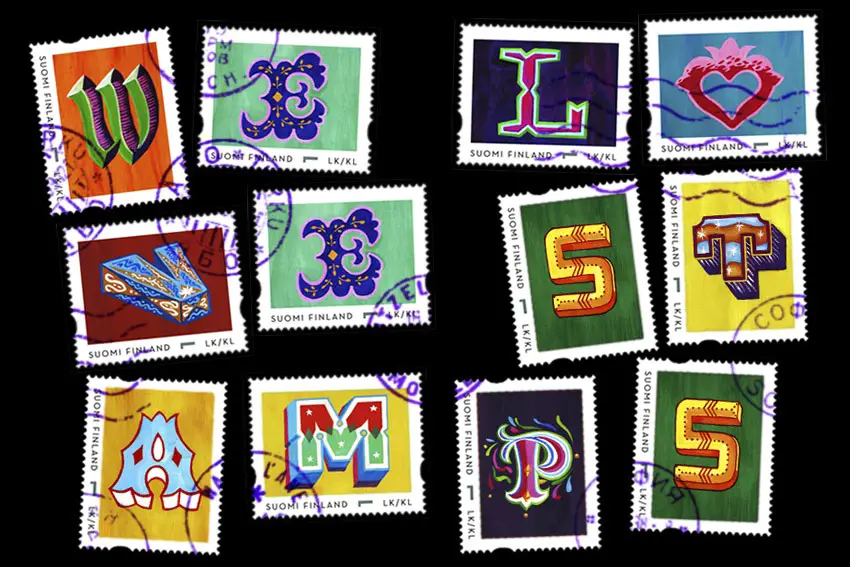
The urge to collect things is part of human nature. If you’re interested in starting a stamp collection, you aren’t alone! About twenty years after the introduction of the first postage stamp (known as the “Penny Black”), the first significant group of stamp collectors emerged. By 1860, thousands of people across the globe called themselves “stamp dealers,” and started to set-up shop.
Most people credit John Edward Gray (who was a British zoologist), as the first stamp collector. Gray saw a potentially lucrative investment when the first Penny Black stamps were released in 1840. He bought several of them the day they were first released, saved them, and his actions earned the title of the world’s first-ever stamp collector.
Contents
The Stamp Collecting Boom
While it might seem a bit unlikely for stamp collecting to boom during the age of modern technology, that’s precisely what we have happening. Despite people becoming more dependent on digital technology (especially for communications purposes), stamp collecting has experienced consistent growth. Considering many people wonder how long “snail mail” will continue to exist, it’s that much more impressive.
So, why are stamps still so popular today? One theory is that people are starting to grow tired of technology. When that happens, they quickly gravitate towards more “simple” activities. Let’s face it. It’s inevitable that people become a bit exhausted and burnt out from digital overload. That is why so many non-technical hobbies seem to be reemerging in popularity lately. Stamp collecting is such a welcome break that even the younger generations are taking notice.
We can mostly thank the Baby Boomer generation (individuals born between 1946 and 1964) for the reemergence of stamp collecting. While many stamp collections may have spent quite a few years unattended to in the attic, they were never forgotten. Now that so many Baby Boomers are “empty nesters,” they are rediscovering their old, nostalgic stamp collections and engaging in the hobby once again.
Technology and stamps experience a bit of a give and take relationship. While technology might be one of the main catalysts to the decline in overall usage, these same advancements have also brought the world much closer together. Because of this, we’ve seen an increase of stamp collectors in countries like China and India. All over the world, more and more people are becoming interested in stamp collecting.
Types of Postage Stamps
If you’re just getting started with stamp collecting, you’ll want to understand the different categories of stamps. This can play a significant role in deciding the type of stamps you wish to collect. Here are some of the main categories of stamps:
Definitive Stamps
In 1847, the first stamp United States issued stamp was released. Since then, a plethora of different stamp types has been issued and sold in America. The longest-standing stamp type, nicknamed the “workhorse” of stamps, is the definitive stamp. A definitive stamp is a regular-issue stamp and is used for everyday mailing. We’ve seen definitive stamps feature a bevy of different denominations over the years.
If you’re thinking about collecting definitive stamps, you’ll undoubtedly have plenty to choose from. Definitive stamps can be used for extended periods, and as a result, the more popular ones may end up reprinted. From there, you can begin to discover differences between the original prints and reprints. For example, the design might look different (because several variations in printing plates are used), the colors can be altered, watermarks can vary, and you’ll also notice perforation and gum differences.
Commemorative Stamps
For a long time, definitive stamps were all the U.S. Postal Service offered. However, in 1893, they came out with a new stamp concept, now known as the commemorative stamp. The first commemorative stamp in the United States was made to commemorate the World’s Columbian Exposition. The stamps were released as a sixteen-stamp series showing different stages of Columbus’ explorations.
Commemorative stamps are exclusive, limited edition stamps that are issued to honor a famous person, event, or anniversary. Commemorative stamps aren’t as widely printed as definitive stamps, and are only sold for a specific time (usually a few months). Commemorative stamps that are left unsold are generally destroyed once the date passes.
Because of their limited nature, many stamp collectors enjoy collecting commemorative stamps. They are less likely to be re-released and are only made for a limited time (perfect storm for collectors). Commemorative stamps almost always guarantee a return on your investment as long as you store them correctly over time.
Semi-Postal Stamps
Semi-postal stamps are stamps that feature an extra surcharge to raise money for a cause. The first Semi-Postal stamp was released in 1997 with the goal of funding breast cancer research, known as the Breast Cancer Semi-Postal. The next semi-postal stamp was issued in 2002 and was known as the Heroes of 9/11 Semi-Postal. That stamp was used to gather funds for the families of emergency workers who were killed (or disabled) during the attacks of September 11, 2001.
Because semi-postal stamps aren’t released often, they can also be useful to add to any stamp collection. Much like commemorative stamps, they almost always guarantee a return on your investment since they are only printed in limited runs.
Airmail Stamps
Airmail service first kicked off in the United States in 1918, and as a result, a new stamp was required. The first airmail stamp in America was the twenty-four cent Curtiss Jenny, which is also widely known due to its famous invert error. Airmail is far more common nowadays, but we still see the use of airmail stamps for international mail. Airmail stamps have a Scott Number that starts with a “C.”
Postage Due and Special Delivery Stamps
In 1878, the first Postage Due stamp was created to indicate an amount that is owed to the Postal Service (when there isn’t enough postage on a piece of mail). These stamps are plain, functional, and usually only tell you the postage that’s due. Their Scott Number starts with a “J.”
The special delivery service began in 1885. These stamps show that an extra fee has been paid for the immediate delivery of the item. They always feature a Scott Number that starts with an “E.”
Parcel Post Stamps, Official Stamps, and Revenue Stamps
By 1912, the Postal Service created stamps so that people could pre-pay for postage on their parcel mail. At that time, twelve Parcel Post Stamps came out, and each one had a different denomination (but all had the same overall appearance and color). As you can imagine, that made it extremely difficult to tell the difference between one cent and a one-dollar stamp upon a glance. Not the best idea.
By 1913, parcel post stamps became obsolete as the Postal Service started allowing people to pay for parcel post with any stamp. As such, original parcel postage stamps are hot collector items, and there are very few of them left. Unless you plan on hunting down some very, very old stamps (and paying a pretty penny), it’s challenging to collect this type of stamp.
Official stamps are stamps that are used only by a department of the United States government. The first set of these was created in 1873 to be primarily used by the Executive Branch. Official stamps existed for seven years. Nowadays, there is one universal, official stamp that all branches of the United States government use.
The last type of U.S. stamp is the Revenue Stamp. Revenue Stamps are used to collect taxes or fees. The most popular types of Revenue Stamps we see are the migratory bird hunting or duck hunting stamps. These stamps are issued every year.
If you’re just starting to get your feet wet with stamp collecting, hopefully, this article has been of benefit. Knowing what’s out there can do wonders when it comes to stamp collecting… especially when choosing a niche. That said, you certainly don’t ever need to limit yourself to just one or two of these categories. There’s a whole world of stamps out there, so get out there and start collecting!






